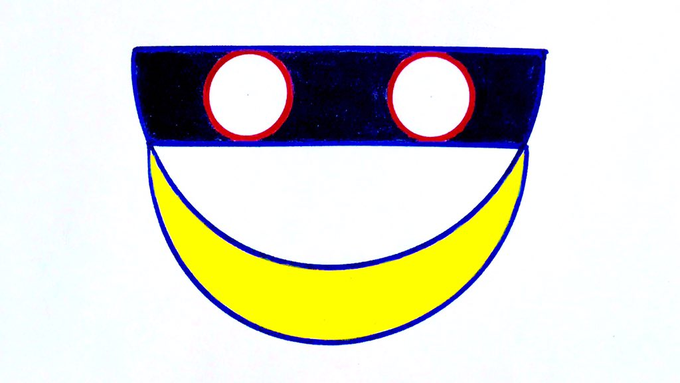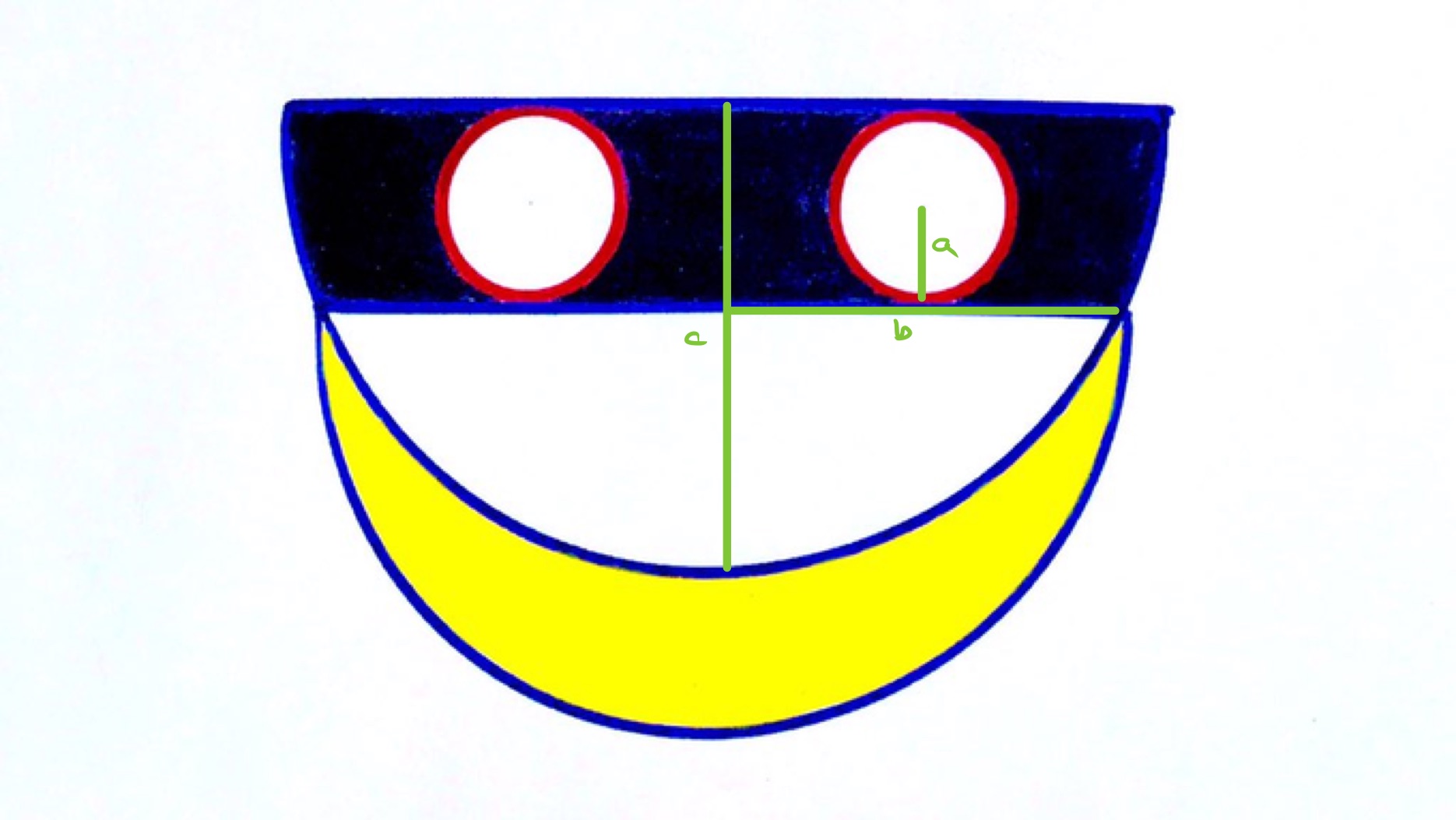Notes
two circles and two semi-circles solution
Solution to the Two Circles and Two Semi-Circles Puzzle

The yellow area is . What’s the total black area?
Solution by Intersecting Chords Theorem or Pythagoras' Theorem

As in the above diagram, let , , and be the radii of the three sizes of circle. The relationship between them is given by the intersecting chords theorem. To apply this, the largest semi-circle needs to be completed to a full circle. The cross chord splits into two segments of length , while the extension of the radius of the largest circle splits into and . The intersecting chords theorem then shows that:
This can also be established using Pythagoras' theorem applied to a right-angled triangle with sides , , and .
The yellow and white regions combined form the middle sized semi-circle and two of the smallest circles, so this has area:
The black and white regions combined form the largest size semi-circle and so has area .
Since , these two regions have the same area. Therefore the yellow and black regions have the same area, which is .